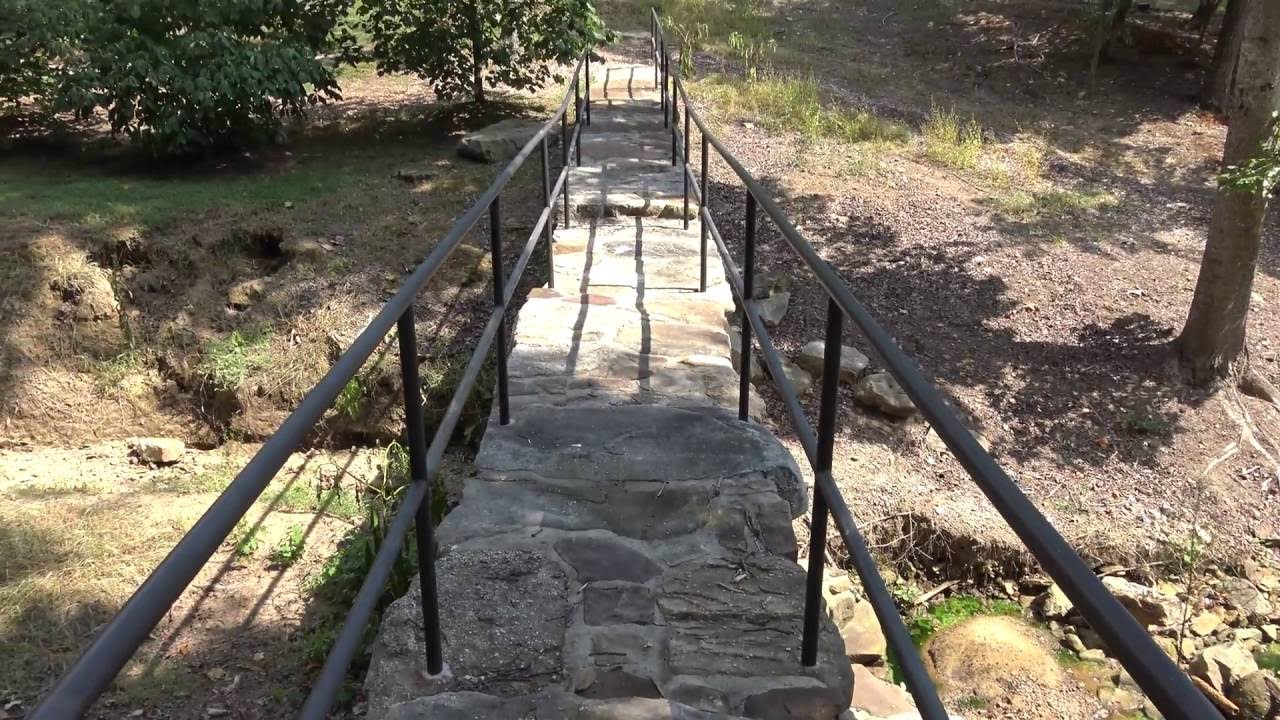Extending 60 feet long and hovering 15 feet above the ground, the Natural Bridge on Lookout Mountain might have seemed to early settlers and ancient Indian tribes like a toy left by a giant or god. It is a mystery of Mother Nature.
The bridge’s geological neighbor, Telephone Rock, is also a marvel, a mammoth boulder with a hole that conveys sound from one side to another, like a telephone. Two other formations, known as “The Old Man of the Mountain” and the “Chinese Grin,” sit atop Lookout Mountain, their comical countenances etched by millions of years of weather, wind, and rain.
In a time when children have remarkable technology at their fingertips, the geological absurdity of these strangely shaped boulders offers a lesson in the effects of time and weather that pairs nicely with a family outing and a Frisbee.
The Natural Bridge area, especially, is both geographically fascinating and rich in history. The land around it, a plot now divided by Bragg Avenue at the corner of Scenic Highway, was the site of salubrious springs, state-of-the-art schools, spiritualist camps and even séances.
Healing waters
In 1878, the rusty chalybeate springs that ran under the Natural Bridge brought desperate Chattanoogans up the mountain, racing to escape a yellow fever epidemic that was consuming downtown. The people climbed toward the healing mineral waters to camp among the boulders at what is now a park maintained by the City of Lookout Mountain.
An early developer of the area was Major McCullough, known for his yearly caravan of oxcarts, animals, people and a piano as he led his family up Lookout Mountain to the cooler climate of his home by the Natural Bridge. He later established the McCullough Hotel, which would eventually become the Natural Bridge Hotel.
McCullough’s 10 children—eight of them daughters—would help build a silk mill and the Flintstone United Methodist Church, a unique stone building once commemorated for its ironic history in Ripley’s Believe It or Not.
Higher education
The education of their children was important to those early Chattanoogans, many of whom employed schoolmasters, hosting private schools in their homes. The Prussian-born Professor H.W. Von Alderhoff, the leading schoolmaster of the mid-19th century, was courted by leading citizens to come to Chattanooga to teach in 1850.
Established in 1859 on Lookout Mountain, his Alderhoff Institute for Boys was considered one of the finest educational institutions in the South before the Civil War began in 1861. Renowned for speaking nine languages, the schoolmaster was entrusted with the children of some of the city’s most notable families, including the Cravens, the Whitesides and the Keys. When word came that war had begun at Fort Sumter, the children lit two barrels of coal tar on fire, danced and gave patriotic secessionist speeches. After many of his students went off to fight, Alderhoff closed the school, moving his own family from the mountain back down to Chattanooga for their safety.
In 1866, a year after the war ended, The Lookout Mountain Educational Institute was opened near the Natural Bridge in response to the absence of a public school system.
New York business mogul Christopher R. Robert, founder of Robert College in Constantinople, was devoted to the furtherance of education in the post-war era; his stewardship of the institute allowed him to spread his educational mission. The Lookout Mountain Educational Institute operated until the Tennessee legislature mandated local management of schools in 1872.
Spiritualists and Oddfellows
The Natural Bridge area also became a haunt for those interested in the netherworld. In 1883, the Southern Spiritualists Association was organized in Chattanooga at a meeting of more than 100 leaders in the national sect. They leased the Lookout Mountain Hotel, purchased the Natural Bridge Hotel, and, as their ranks grew, built larger meeting facilities to accommodate growing numbers at séances, lectures, spirit contacts, feats of extrasensory perception and eerie moonlit meetings featuring war dances among the sandstone sentries.
One spiritualist, a Mrs. Cora Glading, spent hours writing, the lines of channeled text moving up from the bottom of the page and readable only with a mirror.
Many of Chattanooga’s citizens shared the spiritualists’ credo of the “promulgation of the fundamental doctrines of eternal existence and the inter-relation of the Material and Spiritual places of life.”* Possibly responding to the massive death and loss wrought by the Civil War, believers came from all over the country to hear renowned mediums in a setting steeped in ancient auras.
The decision to purchase a Lookout Mountain site for this strange religious sect was made at the Odd Fellows Hall, the home of a benevolent social society from whom the spiritualists drew many of their leaders. The moniker “Odd Fellows” was reputed to have been earned in the 1780s, when working-class men, working together for social good, was considered peculiar, or odd. Such was the benevolent and social spirit of Chattanooga’s Odd Fellows, who manifested the generous principles and practices of the fraternity in their relationships with each other and with their city.
The Hill City and Hamilton Chapters of the Independent Order of Odd Fellows still exist today, one an innocuous door on Frazier Avenue, its windows offering a view of the mountain that has loomed large in its city’s history.

